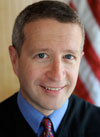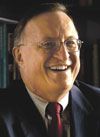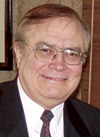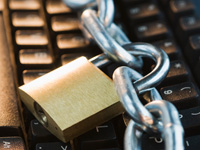 |
 |
 |
|---|
| Richard J. Sankovitz |
Jay E. Grenig |
William C. Gleisner III |
|---|
By Richard J. Sankovitz, Jay E. Grenig & William C. Gleisner III
Nov. 17, 2010 – In July 2010, the Wisconsin Supreme Court adopted a set of new rules, recognizing the advent of electronic discovery and regulating how e-discovery is practiced. The rules take effect Jan. 1, 2011. (For a detailed look at all the new rules approved in July, see the July 2010 Wisconsin Lawyer, “What You Need to Know: New Electronic Discovery Rules.”)
The rules approved in July, however, was not complete. One feature of the proposed rules – whether parties should be required to confer before embarking on electronic discovery – turned out to be a little more controversial and required more work before the terms of the conference rule could be finalized. The Wisconsin Judicial Council, which had originally proposed the rules, considered but declined to include a proposed a rule requiring a prediscovery conference. The supreme court, interested in the meet-and-confer protocols of the federal rules, preferred a prediscovery conference rule and that the conference be mandatory. The court tentatively adopted a mandatory prediscovery conference rule in its July 6, 2010, order, and issued the final version of the rule in Order 09-01A, 2010 WI 129, issued on Nov. 10, 2010.
Here’s what practitioners need to know about this latest development in Wisconsin’s foray into electronic discovery:
The July e-discovery rules at a glance

The rules approved by the supreme court in July feature:
A broad definition of electronically stored information (ESI), commensurate with the broad definition of ESI contained in the Federal Rules of Civil Procedure (see Judicial Council Note 2010 to Wis. Stat. section 804.09(2)(b)2.).
Language changes throughout the discovery rules designed to treat ESI basically as traditional documents.
Borrowing nearly verbatim three of the principal federal rules (and related Advisory Committee notes) governing document discovery: Rule 33(d), which gives a party the option to produce business records in lieu of an interrogatory answer; Rule 34, governing document production; and Rules 45(a) and (d), governing subpoenas duces tecum (see Wis. Stat. sections 804.08(3), 804.09(1) & (2), and 805.07(2)(a) & (b)).
A suggestion to litigants and trial courts that e-discovery be discussed at the initial scheduling conference, and, if the complexities of the case or volume of discovery warrants, that the court consider the appointment of a special master (see Wis. Stat. section 802.10(3)(jm) and Judicial Council Note 2010).
A “safe harbor” provision, borrowed from the federal rules, that protects a party from spoliation charges if data is lost in the routine, good-faith operation of its computers (Wis. Stat. section 804.12 (4m)).
The new mandatory conference rule
On Nov. 10, 2010, the supreme court issued Order 09-01A, 2010 WI 129. The order unveils a revised version of the mandatory prediscovery conference rule tentatively issued on July 6, 2010.
The new rule, Wis. Stat. section 804.01(2)(e), is entitled “Specific Limitations on Discovery of Electronically Stored Information.” It provides that no party may serve a request to produce ESI under Wis. Stat. section 804.09 or respond to an interrogatory under Wis. Stat. section 804.08(3) (business records in lieu of an interrogatory answer) “until after the parties confer … unless excused by the court.” The rule sets forth a list of items all of which must be discussed when the parties confer, including what subjects the contemplated discovery will cover, when it will be completed, whether it should be conducted in phases or be limited to particular issues, the preservation of ESI pending discovery, the form(s) in which ESI will be produced, how the parties plan to protect privileged information, the cost of e-discovery, whether e-discovery should be limited, and whether to appoint a special master.
The new rule also provides for enforcement. If a party fails or refuses to confer, the party seeking to initiate e-discovery may seek an order to compel, under Wis. Stat. section 804.12(1). If a party objects to proposed discovery, the party may seek a protective order, under Wis. Stat. section 804.01(3).
In a special note that will be published with the rule, the supreme court made plain its purpose for adopting this new rule: “as a measure to manage the costs of the discovery of electronically stored information. If the parties confer before embarking on such discovery, they may reduce the ultimate cost.”
The note reveals two other important insights about the new rule:
The court advises litigants and trial courts about how trial courts will decide whether the costs of producing ESI should be borne by the requesting party rather than, as is usual, by the responding party. This is called cost-shifting. The Note suggests that in deciding whether to shift the cost of production from the responding party to the requesting party, a court should consider the relative costs and benefits of the discovery as well as the seven factors federal courts are advised to consider in deciding whether to shift costs.
There are certain discovery tools that parties are permitted to deploy without first conferring. For example, before serving a document request for ESI, a party may depose a corporate representative about the whereabouts and volume and format of the adverse party’s ESI, a technique the court encourages to prepare the parties for a “more informed conference[] about the potential scope of such discovery.”
Practical considerations
Although the new mandatory conference requirement is somewhat like a discovery conference required under Federal Rule 16, the rule does not require the parties to agree on or submit a Rule 26(f) discovery plan.
Parties may ask to be excused from the conference requirement.
The prediscovery conference requirement is triggered by a request to produce that “seek[s] the discovery of [ESI].” Caution should be exercised with regard to off-the-shelf document requests that broadly define documents to include ESI. Although a party seeking documents may not have ESI consciously in mind (or may studiously be avoiding it, to avoid the additional cost), if the definition of the term “documents” includes ESI, the new rule will require a pre-discovery conference.
One might take pains to eliminate from the document request any reference to ESI and even specify that all that is requested is hard copy. But given the ubiquity of ESI, not even this careful formulation may escape the ambit of the new rule. If that hard copy must be generated from data stored on a computer, a good argument can be made that the document request in essence “seek[s] the discovery of [ESI]”, and therefore a prediscovery conference is required. In this new era of ESI, hard copy might best be considered only one of many forms in which ESI can be produced. Indeed, more than 90 percent of all documents that exist in hard copy were originated electronically and may still be stored in that format. The odds, therefore, seem quite strong that no matter how a document request is phrased, it essentially “seek[s] the discovery of ESI” and therefore triggers the pre-discovery conference requirement.
Although the new rule bars a party from serving a document request seeking ESI before conferring with the adverse party, it does not bar a party from serving a proposed version of the request; such a practice might be a useful way to prepare for a mandatory conference and inform the adverse party of just what discovery is contemplated. If parties are unable to reach consensus at a mandatory pre-discovery conference, having a proposed discovery request in hand will make it easier to file the requisite motion to compel or a protective order.
The court is divided about whether the new rule will save costs or not, and whether it will unduly burden self-represented litigants and small claims litigants. In her dissent, Justice Bradley invites judges and practitioners to monitor the effects of the new rule and, if warranted, petition the court.
About the authors
Richard J. Sankovitz, Harvard 1983, is a Milwaukee County Circuit Court judge. He was a member of the ad hoc subcommittee of the Wisconsin Judicial Council that drafted the 2011 e-discovery amendments to the rules of civil procedure. He teaches judges about managing e-discovery disputes in a presentation entitled “Electronic Discovery: New Wine in Old Bottles.”
Jay E. Grenig, California – Hastings 1971, is a professor of law at Marquette University Law School where he teaches civil procedure and e-discovery. He is a former member of the Judicial Council and the author of several books on e-discovery.
William C. Gleisner III, Marquette 1974, is a lawyer in Hartland, Wis., with extensive experience with e-discovery in Wisconsin and throughout the United States. He is the coauthor of a two-volume treatise with Prof. Grenig entitled e-Discovery & Digital Evidence.
:
